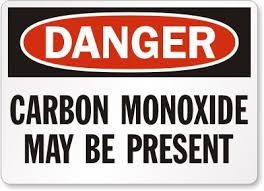5 Reasons Why Your HVAC Unit is Loud Do you find your HVAC unit excessively…

Carbon Monoxide in Your Home
Every year, four thousand Americans are hospitalized due to carbon monoxide poisoning, and four hundred Americans die from it, according to the CDC. So it’s wise to consider whether carbon monoxide might be a danger in your own home and take steps to decrease any risk you may have.
See Also: Avoiding Carbon Monoxide Poisoning During Power Outages
What is Carbon Monoxide
Carbon monoxide (CO) is a product of combustion. In other words, if you burn something like wood, oil, charcoal, or natural gas, you create carbon monoxide. So, if you use your fireplace, that creates carbon monoxide. If you use a gas-powered furnace, stove, oven, or hot water heater, those also create carbon monoxide. When you light up the grill to cook your Fourth of July hamburgers, again—you guessed it—that creates carbon monoxide. Running your car also creates carbon monoxide.
As you can see, almost every home is going to have at least one source of carbon monoxide that could be a danger. Even sources like grills and cars that are technically outside the home can pose a risk under certain circumstances. These circumstances are if you set up the grill too close to a window, or if you leave the car running in an attached garage. Even for only a few minutes, your home can quickly fill with dangerous levels of carbon monoxide.
Prevent Death with Detectors
Because of this, most experts recommend that every home have at least one carbon monoxide detector. Also, some states legally require. If your home has multiple stories, it’s a good idea to have a detector on each level. This can be in addition to your smoke detectors (you already have those, right?), or you can purchase dual smoke and CO detectors to protect your family from both hazards at the same time. It’s particularly important to place a CO detector near your sleeping areas because one of the effects of CO poisoning is that it makes you sleepy and confused. You want to make sure the alarm is close to where you sleep so it will be loud enough to wake you in an emergency.
See Also: Carbon Monoxide Detector by Carrier
To further reduce your CO risk, it’s important to have gas-powered appliances like furnaces inspected annually. Set up your grill well away from your house. Never leave your car running in the garage. By taking these simple precautions and regularly testing your CO detectors to make sure they’re working, you can better protect yourself and your family from the hazards of carbon monoxide.


